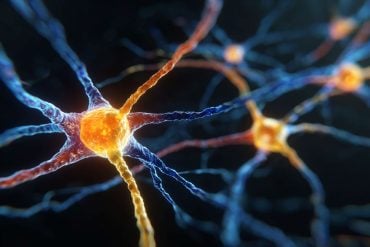Summary: A ten-minute run increases activation of the bilateral prefrontal cortex, improving mood and cognitive function.
Source: University of Tsukuba
Running may be a useful activity to undertake for better mental health. University of Tsukuba researchers have found that only ten minutes of moderate-intensity running increases local blood flow to the various loci in the bilateral prefrontal cortex —the part of the brain that plays an important role in controlling mood and executive functions.
These findings may contribute to the development of a wider range of treatment recommendations to benefit mental health.
There’s clear evidence that physical activity has many benefits, such as the ability to improve mood, but in previous studies, cycling was often the form of exercise studied. Running, however, has always played an important role in the well-being of humans. The unique form and efficiency of human running, which includes the ability to sustain this form of exertion (i.e., by jogging as opposed to sprinting), and the evolutionary success of humans are closely linked.
Despite this fact, researchers had not yet looked closely at the effects of running on brain regions that control mood and executive functions. “Given the extent of executive control required in coordinating balance, movement, and propulsion during running, it is logical that there would be increased neuronal activation in the prefrontal cortex and that other functions in this region would benefit from this increase in brain resources,” explains Professor Hideaki Soya.
To test their hypothesis, the research team used the well-established Stroop Color–Word Test and captured data on hemodynamic changes associated with brain activity while participants were engaged in each task. For example, in one task, incongruent information is shown, i.e., the word red is written in green, and the participant must name the color rather than read out the word.

To do so, the brain must process both sets of information and inhibit the extraneous information. The Stroop interference effect was quantified by the difference in response times for this task and those for a simpler version of the task—stating the names of color swatches.
The results demonstrated that, after ten minutes of moderate-intensity running, there was a significant reduction in Stroop interference effect time. Furthermore, bilateral prefrontal activation had significantly increased during the Stroop task. After running, participants reported being in a better mood. “This was supported by findings of coincident activations in the prefrontal cortical regions involved in mood regulation,” first author Chorphaka Damrongthai adds.
Given that many characteristics of the human prefrontal cortex are uniquely human, this study not only sheds light on the present benefits of running but also on the possible role that these benefits may have played in the evolutionary past of humans.
Funding: This work was supported in part by the Japan Society for the Promotion of Science (JSPS) grants 16H06405, 18H04081, and 21H04858 and the Japan Science and Technology Agency (JST) grant JPMJMI19D5
About this exercise and cognition research news
Author: Naoko Yamashina
Source: University of Tsukuba
Contact: Naoko Yamashina – University of Tsukuba
Image: The image is in the public domain
Original Research: Open access.
“Benefit of human moderate running boosting mood and executive function coinciding with bilateral prefrontal activation” by Hideaki Soya et al. Scientific Reports
Abstract
Benefit of human moderate running boosting mood and executive function coinciding with bilateral prefrontal activation
Running, compared to pedaling is a whole-body locomotive movement that may confer more mental health via strongly stimulating brains, although running impacts on mental health but their underlying brain mechanisms have yet to be determined; since almost the mechanistic studies have been done with pedaling.
We thus aimed at determining the acute effect of a single bout of running at moderate-intensity, the most popular condition, on mood and executive function as well as their neural substrates in the prefrontal cortex (PFC).
Twenty-six healthy participants completed both a 10-min running session on a treadmill at 50%V˙O2peakV˙O2peak and a resting control session in randomized order. Executive function was assessed using the Stroop interference time from the color-word matching Stroop task (CWST) and mood was assessed using the Two-Dimensional Mood Scale, before and after both sessions.
Prefrontal hemodynamic changes while performing the CWST were investigated using functional near-infrared spectroscopy. Running resulted in significant enhanced arousal and pleasure level compared to control. Running also caused significant greater reduction of Stroop interference time and increase in Oxy-Hb signals in bilateral PFCs.
Besides, we found a significant association among pleasure level, Stroop interference reaction time, and the left dorsolateral PFCs: important brain loci for inhibitory control and mood regulation. To our knowledge, an acute moderate-intensity running has the beneficial of inducing a positive mood and enhancing executive function coinciding with cortical activation in the prefrontal subregions involved in inhibitory control and mood regulation.
These results together with previous findings with pedaling imply the specificity of moderate running benefits promoting both cognition and pleasant mood.






